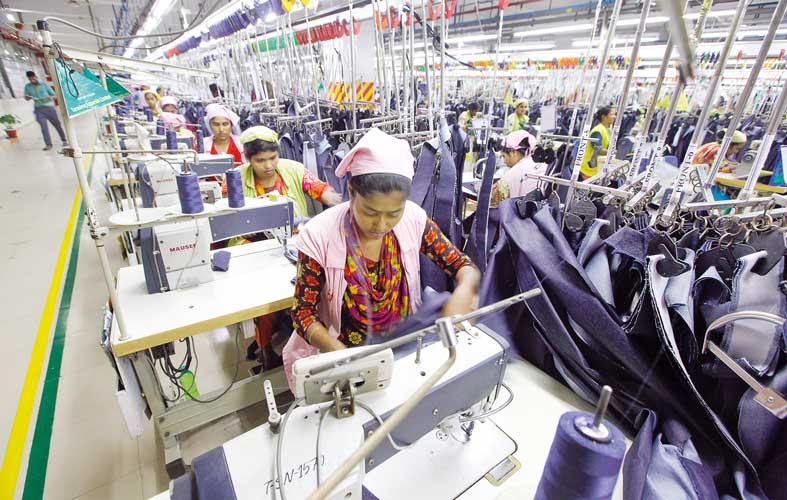Bangladesh, a country with the majority of its border surrounded by India, is now the brightest star in the sky of global economic growth. The densely populated country with 162 million people posted above 8 per cent economic growth in the last fiscal year.
Encouraged by above 8 per cent growth, Bangladesh’s foreign minister made some unnecessary statements on the matter of the Citizenship Amendment Act in India and said that Bangladeshi people do not need to cross the border to get into India territory, as they have a better quality of life Bangladesh.
However, the fact remains that thousands of Bangladeshis cross the border every year to reach the Indian metros like Delhi, Mumbai, Bengaluru, and Hyderabad and millions of others make a failed attempt to do the same. And there are concrete macroeconomic reasons behind this trend.
The primary factor behind the migration to Indian cities is better wage. The wages in Indian cities is more than double that of Bangladesh and just like the people of states like UP, Bihar, and West Bengal export labour to Indian cities, Bangladesh also tries to do the same besides the fact that ‘this is not their country’.
Bangladesh often flaunts that it is set to overtake India in terms of per capita income and this was a big theme in Indian left-liberal media a few days ago when IMF released its October report which projected that the tiny country in the neighbourhood might have a higher per capita income compared to India. But, the quality of life in any area is measured on the basis of per capita income in terms of purchasing power parity (PPP), and given the fact that India’s GDP per capita in PPP is substantially higher-6,285 dollars- compared to Bangladesh which is still at 5,139 dollars- less than even Pakistan’s 5,160 dollars- the Bangladeshis would continue to migrate to India.
One of the reasons Bangladesh’s Human Development Index is lower than that of India is because its GDP per capita in terms of PPP is lower than India’s but the liberal media which is often armed with agenda rather than facts, will not highlight this. The left-liberal media establishment is too incompetent and too biased to look for these reasons behind the migration of Bangladeshis to India.
Bangladesh has the highest population density among the countries with a large population and there is an acute shortage of agricultural land. But to compensate for the shortage of agricultural land, and utilize its huge labour force, Bangladesh chose to focus on manufacturing but this led to single sector dependence which is very bad for any economy.
The garment sector, which alone accounted for 80 per cent of the country’s total exports in FY 17, is the backbone of the Bangladeshi economy, and the primary source of foreign exchange.
But, tables turned at odds with Bangladesh, as Coronavirus lockdown has completely devastated its textile industry, and export orders have been cancelled by European companies which were major customers.
As per a report by Nikkei Asian Review, Japan’s premier financial newspaper, U.K.’s Edinburgh Woolen Mills Group, whose key brands include Peacocks, Jaeger, Bonmarche, and Austin Reed, has cancelled orders worth more than 30 million from nearly three dozen Bangladeshi factories.
The overdependence on a single sector has cost heavily to the economy of Bangladesh, as with the collapse of the textile industry, millions of people in the densely populated country are facing famine.
Orders worth more than 3 billion dollars have been cancelled and the country is facing foreign exchange shortage. Bangladesh has a world-renowned textile industry footprint. The current pandemic is threatening the very existence of this industry, and if the situation globally does not improve soon, the industry might never be able to resuscitate itself.
The comparison with the Indian economy, which has a very broad base compared to Bangladesh, is stupid. The Indian economy has many sectors like IT, Pharmaceuticals, Automobiles, which are only set to boom in the post-pandemic period. So, the long term prospects of the Indian economy remain bright while Bangladesh could collapse with the downfall of the textile sector.
Moreover, the country has an unhealthy tax to GDP ratio at 12.2 per cent and last year, the parliament passed a 62 billion dollar budget with a 3.3 per cent fiscal deficit. So, it can never achieve the level of human development index like India which has a tax to GDP ratio of 17 per cent and a very high government spending of near 30 per cent to GDP. It will encourage the Bangladeshis to move to India. Bangladesh remains a good friend and both countries should grow together but any comparison with India is ill-advised and not asked for.
